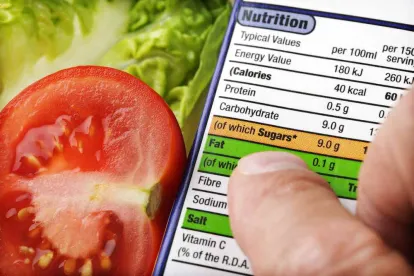The upward trend in the number of new putative consumer class actions alleging misleading food labeling continued in 2021. Many of these cases were filed in traditional hot bed venues such as the Northern District of California (the “Food Court”), and an increasing number were filed in courts in the Midwest, especially Illinois.
Courts continue to scrutinize challenged labels through the eyes of the “reasonable consumer”—a judicially imagined person deemed representative of a significant portion (though less than 50%) of the target consuming public acting reasonably in the circumstances. While all of the information on a package and the context in which it is presented is considered, a reasonable consumer generally is not required to test an ambiguous front label claim against additional information on the back label, particularly for lower priced items. Bell v. Publix Super Markets, Inc., 982 F.3d 468, 476 (7th Cir. 2020). While it may be too early to conclude that courts are requiring an increased level of scrutiny by the reasonable consumer, rulings from 2021 suggest that manufacturers may succeed in obtaining early disposition of claims at odds with a common sense label interpretation.
Some of the most common types of label claims challenged in 2021 include:
-
Claims that words such as “vanilla” and “strawberry” are misleading because the products do not include those ingredients. Many of these cases were dismissed on the grounds that reasonable consumers understand such words when used alone to simply describe the product’s flavor, as opposed to identifying the primary ingredient providing that flavor. See, e.g., Tropp v. Prairie Farms, No. 20-cv-1035-jdp, 2021 WL 5416639 (W.D. Wis. 2021). But adding a word or image might change the result. See, e.g., Rudy v. Familiar Dollar Stores, Inc., No. 21-cv-3575, (N. D. Ill. Feb. 4, 2022) (denying motion to dismiss claim that “smoked almonds” label description was misleading because the smoked flavor derived from liquid smoke, not roasting over an open fire).
-
Claims that labels overpromised the number of servings that can be made from one container. One case was dismissed on the grounds that a claim of “up to” a number of servings was only a ceiling not a floor, Brodsky v. ALDI, No. 20 C 7632, 2021 WL 4439304 (N.D. Ill. 2021), but another case held that similar language could be misleading if there was a “huge disparity” between the number of servings a consumer could make by following the canister’s instructions and the amount referenced on the label. In re: Folgers Coffee, Marketing Litigation, No. 21-2984-MD-W-BP, (W.D. Mo. 2021). A “servings” case was settled for $16 million and a commitment to modify its serving label claim. Ferron v. Kraft Heinz Foods Co., No. 0:20-cv-62136, (S.D. FL). The lessons of these cases readily apply to many other food products.
Other types of claims challenged in 2021 were:
-
Claims that a product was free of preservatives or artificial flavors when certain dual-use ingredients could have been used as preservatives or as flavoring.
-
Claims alleging that the location used in the manufacturer’s name implied the product originated there when it actually originated elsewhere.
-
Claims challenging a label’s claim that a product derived from “sustainable” practices when they are alleged to have been made from industrialized farming.
Noteworthy settlements in 2021 involved cases alleging that healthfulness claims were misleading in light of the products’ sugar content. See McMorrow v. Mondelez, No. 3:17-cv-02327 (S. D. Cal.) (breakfast bars, $8 million); Krommenhock v. Post Foods, LLC, No. 16-cv-4958-WHO (N.D. Cal.) (cereal, $15 million); Hadley v. Kellogg Sales Co., No. 5:16-cv-04955 (N.D. Cal.) (cereal, $13 million). In this context, it is interesting that the FDA announced plans in 2021 for a revised definition of “healthy” and revised requirements for when that implied nutrient claim can be voluntarily used on human food product labels. The FDA also announced that it was conducting research into a “healthy” symbol.




 />i
/>i
